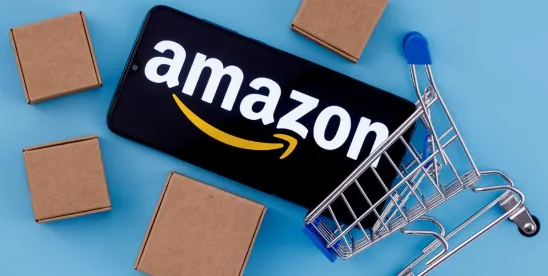Despite recent leadership and other changes at the agency, the U.S. Consumer Product Safety Commission (the “CPSC” or “Commission”) has maintained its focus on regulating e-commerce platforms that facilitate large-volume imports from foreign manufacturers directly to U.S. consumers.1 On July 29, 2024, and January 16, 2025, the CPSC advanced this priority by issuing orders classifying Amazon—the largest e-marketplace—as a “distributor” under the Consumer Product Safety Act (CPSA). Under these orders, the CPSC asserts that Amazon is responsible for hazardous products sold through its Fulfilled by Amazon (“FBA”) program.
In response, in March 2025, Amazon filed suit against the CPSC in the United States District Court for the District of Maryland. Amazon challenges both the constitutionality and the scope of the Commission’s actions.
This lawsuit comes at an interesting time—the Supreme Court having recently abandoned Chevron deference, directing lower courts to employ greater scrutiny towards agencies, and as the Trump Administration challenges the “for cause” protections historically afforded to CPSC Commissioners and other heads of independent federal agencies. How these parallel actions will impact Amazon’s case against the CPSC is tough to tell. With this many moving pieces, it will be quite some time before the dust settles.
- The CPSC’s Case Against Amazon
- The Fulfilled by Amazon Program and Distributor Status under the CPSA
Amazon’s lawsuit stems from the CPSC’s 2021 administrative action, wherein the Commission alleged that Amazon is a “distributor” under the CPSA, with respect to its Fulfilled by Amazon (FBA) program. Under Section 15 of the CPSA, manufacturers, distributors, and retailers must “immediately inform the Commission” of any product that:
- “fails to comply with an applicable consumer product safety rule . . . ;
- fails to comply with any other rule, regulation, standard, or ban . . . enforced by the Commission;
- contains a defect which would create a substantial product hazard . . . ; or
- creates an unreasonable risk of serious injury or death.” 2, 3
If a business “knowingly”4 violates Section 15’s reporting requirements, the CPSA imposes hefty civil penalties of up to $120,000 per knowing violation and $17,150,000 for a series of related violations.5 In addition to financial penalties, companies may be required to notify consumers and conduct recalls in coordination with the CPSC. Thus, with such a designation, Amazon could be responsible for any hazardous product sold on its platform.
Since its inception in the early 2000s, Amazon has asserted the “third-party logistics provider” exemption, set forth in Section 3(b) of the CPSA, with respect to the FBA program. This exemption—originally designed to protect carriers like UPS and FedEx—excludes from Section 15’s reporting obligations those entities that merely receive, hold, or transport goods without taking title to them. Historically, Amazon maintained that the FBA program provided similar logistics and shipping services; nothing more. Namely, it allows independent third-party sellers to list products on Amazon’s e-commerce platform while outsourcing storage, packaging, and shipping to Amazon’s logistics network. According to Amazon, this likened the FBA Program to UPS’s global shipping network. In 2024, however, the CPSC made clear why it disagreed.
B. The Fulfilled by Amazon Program and Distributor Status under the CPSA
In its July 2024 Decision and Order in the administrative action, the Commission found that Amazon “fit squarely within the definition of distributor under the CPSA.” 6 It emphasized that Amazon’s role extended well beyond storage and delivery. Specifically, the Commission noted that Amazon:
- Stored products in its warehouses;
- Controlled product listings and fulfillment processes;
- Processed customer payments and remitted funds to sellers after deducting fees;
- Managed customer service, returns, and refunds; and
- Offered technology tools and logistical support that shaped the entire transaction.
According to the Commission, this degree of operational control meant that Amazon was not simply hosting transactions—it was materially participating in the distribution of products and introducing them into commerce, meaning the company falls within the CPSA’s definition of a “distributor.”
From the CPSC’s perspective, this designation of Amazon as a distributor means that Amazon is now responsible for hazardous and/or non-compliant products sold through its FBA platforms. As a distributor, Amazon would have a duty to report dangerous products to the CPSC, notify consumers of safety issues, and cooperate in issuing recalls and offering remedies such as refunds, repairs, or replacements.
C. Amazon’s Appeal
In March 2025, Amazon appealed the Commission’s decision to the United States District Court for the District of Maryland, advancing the same arguments it made during the CPSC enforcement action. First, Amazon contends that the CPSC’s interpretation of the CPSA is unlawful, arguing that the agency’s recall orders require remedies for products “manufactured, owned, and sold by third parties”—conduct that, in Amazon’s view, falls outside the CPSA’s statutory scope. Second, Amazon claims the CPSC violated the Administrative Procedure Act by requiring it to oversee additional recalls and notifications, noting it already contacted affected buyers twice and fully refunded purchases in 2021 and 2022. According to Amazon, the Commission’s demand for yet another round of notices and refunds is arbitrary. Third, Amazon asserts that the Decision and Order is unconstitutional because the five commissioners who voted to proceed with the administrative action and approve the Decision and Order acted as “judge, jury, and prosecutor” in the same proceeding, thereby depriving Amazon of an impartial tribunal.
In decades past, the likelihood of success on these arguments would be slim to none. For four decades, under Chevron U.S.A., Inc. v. Natural Resources Defense Council, Inc., courts were required to defer to an agency’s reasonable interpretation of ambiguous statutory provisions when taking official agency action.7 As a result, courts typically upheld agency actions, like the CPSC’s Decision and Order related to Amazon’s FBA Program, unless the court found such agency action was “arbitrary and capricious.” That landscape shifted in June 2024, when the Supreme Court overturned Chevron in Loper Bright Enterprises v. Raimondo. There, the Supreme Court held that courts reviewing agency actions must “exercise independent judgment in determining the meaning of statutory provisions,” even when those provisions are ambiguous.8 Without Chevron deference, the CPSC’s Decision and Order—and, more specifically, whether the CPSC has the authority to even make that Decision and Order in the first instance—faces closer judicial scrutiny.
II. A Moment of Regulatory Change
While the CPSC has pursued Amazon for years, Amazon’s appeal of the Commission’s Decision and Order comes at a unique time.
With the Supreme Court having recently dismantled Chevron deference, directing lower courts to employ greater scrutiny towards agencies, and the Trump Administration challenging the “for cause” protections historically afforded to CPSC Commissioners and other heads of independent federal agencies, it is unclear how these parallel actions will impact Amazon’s case against the CPSC. The CPSC is scheduled to file a motion for summary judgment in the Amazon litigation on October 1, 2025, where it will have to defend its authority to regulate the e-commerce platform. The decision on that motion should provide some clarity, but it will be quite some time before any overall resolution.
In the interim, it is clear that Amazon and other e-commerce platforms should ensure they have robust compliance programs in place. At present, the CPSC continues to implement all executive orders and directives while maintaining robust enforcement efforts consistent with its core mission of protecting the public. Despite recent leadership and other changes at the CPSC, the Commission remains very active, recently announcing a “Record-Breaking Week” of enforcement action against Chinese manufacturers concerning products exclusively sold on Amazon.
Footnotes
1 See statement from Commissioner Douglas Dziak and Chairman Peter Feldman on the Fiscal Year 2025 Operating Plan: “The plan now designates e-commerce platforms as a top enforcement priority. Direct-to-consumer platforms . . . have grown significantly in the past year. Under this provision, the agency recommits itself to providing consistent enforcement and changing e-commerce landscape.”
2 15 U.S.C. § 2064(b).
3 “Substantial Product Hazard” is further defined as “a product defect which (because of the pattern of defect, the number of defective products distributed in commerce, the severity of the risk, or otherwise) creates a substantial risk of injury to the public.” 15 U.S.C. § 2064(a)(2).
4 The CPSIA defines “knowingly” as either “actual knowledge” or “knowledge deemed to be possessed by a reasonable man who acts in the circumstances, including knowledge obtainable upon the exercise of due care to ascertain the truth of representations.” 15 U.S.C. § 2064(b).
5 15 U.S.C. § 2068; Civil Penalties; Notice of Adjusted Maximum Amounts,86 Fed. Reg. 68244 (Dec. 1, 2021) (available at: https://www.govinfo.gov/content/pkg/FR-2021-12-01/pdf/2021-26082.pdf) (adjusting the maximum amount of civil penalties for inflation).
6 In re Amazon, CPSC Docket No. 21-2 (July 29, 2024) at 26.
7 467 U.S. 837 (1984).
8 Loper Bright Enterprises v. Raimondo, No. 22-451 (June 28, 2024), together with Relentless, Inc. v. Department of Commerce.







 />i
/>i

